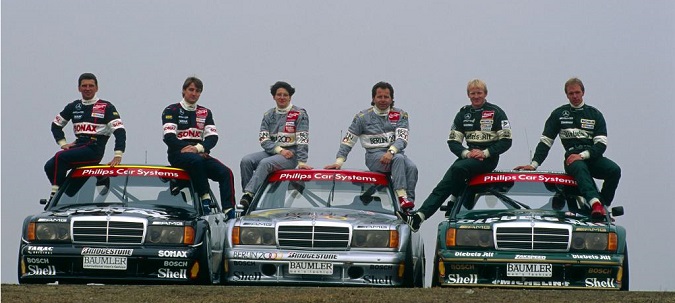-
Five original vehicles there to represent the successful motor sport history of Mercedes-Benz
-
Well-known brand ambassadors: Ellen Lohr, Roland Asch and Dieter Glemser
-
More than 250 members expected from the Mercedes-Benz brand clubs
The Classic Days Schloss Dyck will be taking place for the ninth time from 1 to 3 August 2014. This year, Mercedes-Benz Classic will be attending the Rhineland venue with five original vehicles spanning 120 years of motor sport history: inspired by the theme of racing records, the brand is bringing a unique version of the C 111 research vehicle with a V8 engine to the moated castle along with a Mercedes-Benz 300 SLS (W 198) and a Mercedes-Benz 190 E 2.3-16 (model series 201) that broke records at the Nardò test track. These stunning racers will be driven by well-known former racing drivers. The vehicles will be on display in the paddock, together with the Silver Arrows Mercedes-Benz 750-kg W 25 racing car from 1934 and the Mercedes-Benz 2.5-litre racing car W 196 R from 1955.
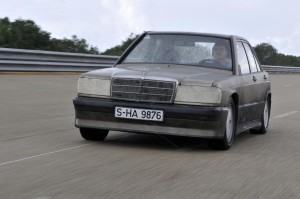
Mercedes-Benz 190 E 2.3-16 (W 201) at the high-speed circuit in Nardò/Italy. Original vehicle of the “Weiß” team which made the world record run with three identical vehicles in Nardò, from 11 to 21 August 1983. The 190 E 2.3-16 covered a distance of 50,000 kilometres and set no less than three world records and nine class records. Photograph dated November 2013.
From history’s first motor racing in 1894 to the various current involvements in motor sports, the motor sport activities of Mercedes-Benz and its predecessor brands tell a story of success whose roots date back to the very early days of the motor cars. Since the 19th century, the racing and rally cars from Stuttgart have consistently been at the head of the pack in sporting competitions. Their victories are testimony to innovative technology, the drivers’ will to win and efficient teamwork.
Each of the original vehicles from the Mercedes-Benz Classic collection to be shown and driven at the Classic Days Schloss Dyck 2014 opens up an exciting chapter from the 120-year history of motor sport at Mercedes-Benz.
-
In 1934, the Mercedes-Benz W 25 established the era of the Silver Arrows when the white paintwork that had until that point been the team’s hallmark was sanded off to reduce the car’s weight, just a day before the race. From that point on, Mercedes-Benz racing cars would celebrate their international victories in shining silver.
-
The Mercedes-Benz W 196 R 2.5-litre racing car dominated the Grand Prix scene during 1954 and 1955, making the legendary Juan Manuel Fangio World Champion twice over.
-
In this particular Mercedes-Benz 300 SLS, the racing version of the 300 SL “Gullwing”, Paul O’Shea won the Sports Car Club of America’s National Sports Car Championship in 1957 in Class D.
-
The Mercedes-Benz C 111 experimental vehicle of 1970, powered by a V8 engine, and the largely series-standard record-breaking Mercedes-Benz 190 E 2.3-16 of 1983, are both prime examples of the historical continuity seen in the interplay between sportiness and innovation.
Mercedes-Benz Classic is expecting to welcome more than 250 members and guests of the official brand clubs at this renowned classic car event held at Jüchen, in the Rhine district of Neuss. Around the world, there are around 80 recognised brand clubs with altogether some 80,000 members. These clubs represent a vital link between the club scene and Mercedes-Benz itself.
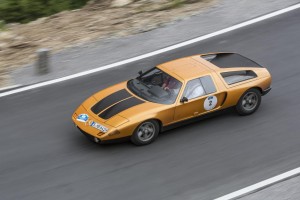 Temporary open-air museum for motor car classics
Temporary open-air museum for motor car classicsThe convivial atmosphere of the Classic Days has made the event extremely popular among automobile enthusiasts and collectors from all over Europe. This year’s programme, once again, offers plenty of highlights. The “Classic Corner”, held on the 1.3-kilometre-long “miscanthus field” – named after the crop commonly known as elephant grass – offers a tremendous array of marques: individual visitors as well as the more than 100 classic car clubs will be displaying their treasures here, creating in the process one of the finest and largest temporary open-air museums in the world. The supreme performance of the “Racing Legends”, vehicles from the various eras of motor sport, is demonstrated on the three-kilometre-long circuit. “Jewels in the Park” is a Concours d’Élégance in the FIVA category A (Fédération Internationale des Véhicules Anciens), the title of which is very apt for this exceptional display of collectors’ vehicles, one-off models and prototypes from around the world. This superb event will be further enhanced this year by a special display entitled “Streamline – Stromlinie”.
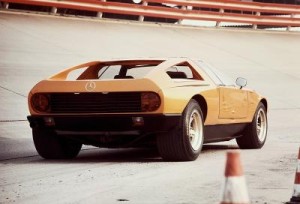
Mercedes-Benz research car C 111-II with four-rotor Wankel enigne on the Untertürkheim test track, 1970.
Mercedes-Benz Classic vehicles at the Classic Days Schloss Dyck 2014
Mercedes-Benz 750-kg racing car (W 25), 1934
The W 25 was the first Mercedes-Benz racing car for the new Grand Prix formula valid from 1934. This formula prescribed a maximum weight of 750 kilograms for the vehicle (without service fluids and tyres) – in this way the organisers wanted to limit the power output of the racing cars and thus the top speeds that were possible. The designers at Mercedes-Benz opted for a classic vehicle architecture: the front engine drove the rear wheels via a transmission on the rear axle. The in-line eight-cylinder engine originally had a displacement of 3.4 litres and featured supercharging, which had fully proven its worth in racing. Painted in the German racing livery colour of white, the W 25 weighed in at the Nürburgring one kilogram over the limit, just a day before its first deployment in the International Eifel race. The legend holds that the mechanics scraped the paint off, allowing the racer to shine in the silver colour of its unpainted bodywork. With Manfred von Brauchitsch at the wheel it won the race, founding the unique success story of the Silver Arrows. The W 25 raced between 1934 and 1936 and was continuously further developed and enhanced during this time. In 1935, it helped Rudolf Caracciola to win the title in the European Championship, an achievement then topped by two Grand Prix victories in 1936, in Tunis (Algeria) and Monte Carlo (Monaco).
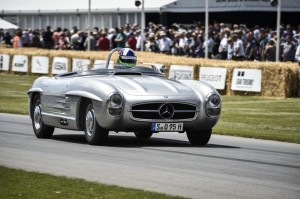
Mercedes-Benz 300 SLS (W 198). The vehicle is a special lightweight version of the 300 SL Roadster, two examples of which were produced in 1957 for the American sports car championship. Paul O’Shea won in Category D, having secured a significant lead over the competition. Photograph from the Goodwood Festival of Speed 2014.
Technical data
Period of use: 1934-1936
Cylinders: 8/in-line
Displacement: 3,360 to 4,740 cubic centimetres
Output: 260 kW (354 hp) to 363 kW (494 hp)
Top speed: 180 km/h
Mercedes-Benz 2.5-litre racing car (W 196 R) with open wheels, 1955
In most of the Formula 1 races of 1954 and 1955, it was not the streamlined car that was driven, but the classic monoposto with open wheels. This variant is significantly better suited to racetracks with numerous bends, because it allows the driver to take the measure of bends much better. Like the streamlined car, the classic version started with flying colours, winning the very first competition it entered, the European Grand Prix at the Nürburgring. The victor was Juan Manuel Fangio, who had already won the opening race in Reims and – with a 4th place in the British Grand Prix – learned that the streamlined car’s capability of handling very winding racetracks was limited. The W 196 R was reworked for its second season: the straight intake manifold, which allowed an increase in engine output to 213 kW (290 hp), and the additional dome on the left side of the bonnet became the outward distinctive features of the 1955 version of the vehicle. In addition, Mercedes-Benz deployed the W 196 R with different wheelbases, and the arrangement of the drum brakes was varied. The result was a superior racing car that also dominated the 1955 season and helped Juan Manuel Fangio to win his second World Championship title with Mercedes-Benz.
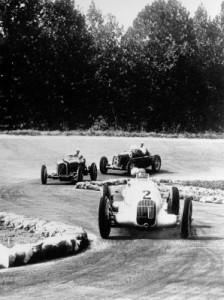
Italian Grand Prix in Monza, September 9, 1934. The winner Rudolf Caracciola at the wheel of a Mercedes-Benz formula racing car W 25 with start number 2.
Technical data
Period of use: 1954-1955
Cylinders: 8/in-line
Displacement: 2,497 cubic centimetres
Output: 188 kW (256 hp) to 213 kW (290 hp)
Top speed: up to 300 km/h
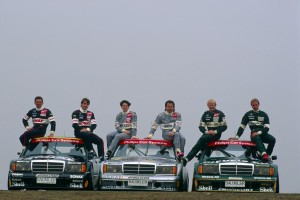
Roland Asch (left) and his teammates Bernd Schneider, Ellen Lohr, Klaus Ludwig, Kurt Thiim and Jörg van Ommen with a Mercedes-Benz 190 E 2.5-16 Evolution II (W 201) in the DTM-season 1993.
Mercedes-Benz 300 SLS (W 198), 1957
Two units of the Mercedes-Benz 300 SLS, a special variant of the 300 SL Roadster, were built for the American Sports Car Championship in 1957. This was due to the fact that the series-production version of the brand-new model was not yet permitted to join the starting line-up of the “standard production” category that season. In order to have at least some chance of success in the only other remaining racing category D, the engineers applied every trick in the book to strip out a standard-production roadster and turn it into the lightweight SLS, weighing just 970 kilograms. At the same time, its engine output was increased to 173 kW (235 hp). Paul O’Shea drove the SLS to victory in Class D of the American Sports Car Championship, winning by a clear margin ahead of the competition – so adding to his wins of 1955 and 1956 in the 300 SL “Gullwing”.
Technical data – Mercedes-Benz 300 SLS (W 198)
Year of use: 1957
Cylinders: 6/in-line
Displacement: 2,996 cubic centimetres
Output: 173 kW (235 hp)
Top speed: 260 km/h
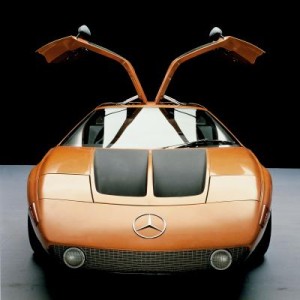
Mercedes-Benz research car C 111-II with four-rotor Wankel engine, 1970.
Mercedes-Benz experimental vehicle (C 111) with V8 engine, 1970
Mercedes-Benz presented the C 111 at the Frankfurt Motor Show in September 1969. With its extreme wedge shape and gullwing doors, the research vehicle had a glass-fibre-reinforced plastic body and was powered by a three-rotor Wankel engine with an output of 206 kW (280 hp). This futuristic sports car could reach a speed of up to 270 km/h. The following year, a revised version of the C 111 was shown at Geneva – but now with a four-rotor Wankel engine delivering 257 kW (350 hp). This version of the C 111 could accelerate from 0 to 100 km/h in 4.9 seconds and reach a top speed of 300 km/h. It was this second version of the research vehicle that served as the basis for a V8 variant of the C 111 containing the M 116 production engine (147 kW/200 hp), which Mercedes-Benz engineers and technicians used for the purposes of comparison with the rotary-engined sports car. Despite numerous orders, the C 111 remained an experimental vehicle and never entered series production. Mercedes-Benz instead went on to develop a series of record-breaking vehicles based upon it: the C 111-II D (1976) and the C 111-III (1977-1978, both with a five-cylinder diesel engine) and the C 111-IV (1979, V8 petrol engine with turbocharging).
Technical data
Production period: 1970
Cylinders: V8
Displacement: 3,499 cubic centimetres
Output: 147 kW (200 hp)
Top speed: 300 km/h
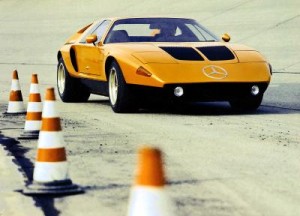
Mercedes-Benz research car C 111-II with four-rotor Wankel enigne on the Untertürkheim test track, 1970.
Mercedes-Benz 190 E 2.3-16 (W 201), 1983
A grand total of twelve records, including three world records over the distances of 25,000 kilometres, 25,000 miles, and 50,000 kilometres – such is the impressive tally of the record-breaking drive undertaken in 1983 with the Mercedes-Benz 190 E 2.3-16 (W 201). For almost nine days, the record-breaking cars drove round and round the high-speed oval track at Nardò, with only the occasional brief stop for maintenance, at an average speed of almost 250 km/h. In doing so, they delivered incontrovertible proof of the reliability of the then new four-cylinder engine, an established feature of the volume-production model ranges ever since. Three largely standard models were used for the record-breaking attempt in Nardò, each with different-coloured markings for simpler identification. The car on display here is the original vehicle of the White team. All three cars completed the distance. The vehicle driven by the Red team, headed by Erich Waxenberger, was the first to cover 50,000 kilometres and, with an average speed of 247.939 km/h, set a world record that stands to this day.
Technical data
Production period: 1983-1988
Cylinders: 4/in-line
Displacement: 2,299 cubic centimetres
Output: 136 kW (185 hp)
Top speed: 261 km/h (standard model: 230 km/h)
The drivers for Mercedes-Benz Classic at the Schloss Dyck Classic Days 2014

Mercedes-Benz research car C 111-II with four-rotor Wankel enigne, 1970.
Roland Asch
Born on 12 October 1950 in Altingen, Germany
Trained as a master automotive mechanic, Roland Asch began his motor racing career as a hobby but achieved victories like a professional: after winning the German Hill-Racing Championship in 1981 and the German Motor Racing Trophy in 1983, he made his debut in the German Touring Car Championship (DTM) in 1985. In 1988, he was the championship runner-up in the DTM with the Mercedes-Benz 190 E 2.3-16 of the BMK team. In the late 1980s, he won the overall rankings in the Porsche 944 Turbo Cup three times, and in 1991 took the championship title in the Porsche Carrera Cup. In the early 1990s, he achieved a total of five wins and various good placings in the DTM for Mercedes-Benz. In 1993, he was runner-up in the DTM once again, before moving to join Ford in the Super Touring Car Cup in 1995. Roland Asch remains very closely associated with Mercedes-Benz as a brand ambassador.
Dieter Glemser
Born 28 June 1938 in Kirchheim/Teck, Germany
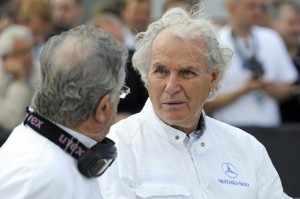
Mercedes-Benz & Friends 2011, Berlin-Tempelhof. Mercedes-Benz Classic brand ambassador Dieter Glemser talking with Hans Herrmann.
His career in the fast lane kicked off in the 1960 Schorndorf Hill-Climb Race. Numerous class victories duly ensued in various hill-climb and circuit races at Nürburgring. His career with Mercedes-Benz began in 1963 with overall victory in the Poland Rally in the Mercedes-Benz 220 SE, followed by 2nd places in the Germany Rally (including one class victory) and in the Argentinian Touring Car Grand Prix. In the following year, he was part of the triple victory by Eugen Böhringer/Klaus Kaiser, Dieter Glemser/Martin Braungart and Ewy Rosqvist/Eva-Maria Falk in the Argentinian Touring Car Grand Prix. With Ford, Dieter Glemser claimed a European Championship title for touring cars in 1971, a win in the Spa-Francorchamps 24-Hour Race and the German Racing Championship in 1973 and 1974. His active racing career came to an end in November 1974 following a serious crash caused by tyre damage in the touring car race in Macao (South-East China). Dieter Glemser was a member of the Mercedes-Benz motorsport team for ten years from 1990, as head of the department responsible for organisational matters. From 2001 to 2008, he worked as a freelancer for Mercedes-AMG and the parent company in Stuttgart in the area of sports and safety training as well as Classic events, in which he still is active today.
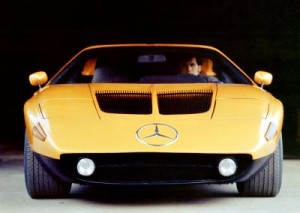
Mercedes-Benz research car C 111-II with four-rotor Wankel enigne, 1970.
Ellen Lohr
Born 12 April 1965 in Mönchengladbach, Germany
Ellen Lohr came to motor sport from the kart racing scene, where she was active from 1979 to 1983. Her greatest successes were participation in the Junior Kart World Championships and a first place in the North-West German Kart Championships. After competing in the German Formula Ford 1600 series (German Champion in 1987), and first participating in the DTM (BMW) and German Formula 3 Championships with VW in 1989/90, she was engaged for the German Touring Car Championships by the AMG-Mercedes team. For the 1995 season, she moved to the Mercedes-Zakspeed team, and in 1996 drove for the AMG-Mercedes team Persson MS. Ellen Lohr is the only woman to date to have achieved a DTM victory, which she won in May 1992 at the motor racing festival in Hockenheim at the wheel of an AMG-Mercedes 2.5-16 Evolution II. In 1997, she competed in the European Truck Racing Championships, driving a Mercedes-Benz racing truck. Subsequently Ellen Lohr has continued to be actively involved in numerous other race series, including the Paris–Dakar Rally since 2005 and then back in truck racing since 2012.
Did you already know? Pebble Beach Concours d’Élégance, 13 to 17 August 2014: The Mercedes-Benz 540 K Streamliner is presented for the first time to a wider audience.
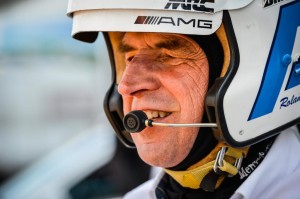
Mercedes-Benz Classic brand ambassador Roland Asch at the Historic Trophy 2014 at the Nürburgring in June 2014.
